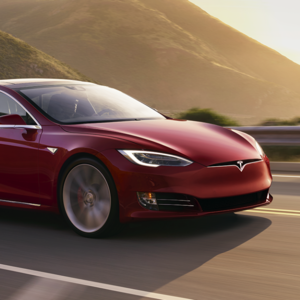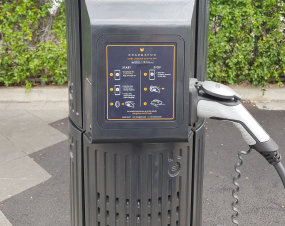Tesla’s latest is all set to reach US customers this week. After years of waiting and months of asking “but how much bigger is it?”, we can finally see it over the horizon. But what’s the difference anyway? Isn’t it just a slightly inflated Model 3?
Same same, but different
You could be forgiven for thinking it is. From a distance, the Model Y and the Model 3 are almost indistinguishable. Even up close, it can be tough to tell them apart. The main difference is the size; Tesla has confirmed the Model Y is 18 cm taller and 6 cm longer than the Model 3. Also 156 kg heavier, if you were planning on lifting it.
That extra space makes it possible to squeeze in an extra 2 seats in an optional 3rd row. US buyers can pay $3,000 to upgrade to the 7-seater variant of the Model Y.
Everything else, though, feels pretty similar. They have the same 15” touchscreen console, glass roof, exterior & interior design, and 75% of the same parts. The Model Y is also offered in Performance and Long Range variants — just like the Model 3, minus the Standard Range Plus.
The Performance Model Y boasts a 241 km/h top speed, a 3.7s 0/100 and 480 km (WLTP) range. The Long Range variant brings the range up to 505 km (WLTP) in exchange for a reduced 217 km/h top speed and 5.1s 0-100. The Long Range is also $8,000 USD cheaper without the Performance model’s 21” wheels, brakes, lowered suspension and aluminium pedals.
Despite the overlap with the Model 3, Tesla are expecting big things for the Model Y. Elon Musk told Business Insider in October 2019:
“I think it’s quite likely to – this is just my opinion, but I think it will outsell S, X, and 3, combined.”
But while the Model 3 stood alone at launch in an almost empty EV sedan market, the Model Y is entering a much more crowded space.
Growing competition
Electric crossovers & SUVs are coming in thick and fast in 2020. Big releases from Ford, Audi, and Volkswagen are slated for the next 12 months; others like the Jaguar I-PACE are already out there attracting buyers.
And many of them are priced competitively with the Model Y. For the sake of comparison, we’re listing the US prices for the following models.
Tesla Model Y
- Performance — US $60,990
- Long Range — US $52,990
Ford Mach E
- Starts at US $43,895
Audi e tron SUV
- Starts at US $75,795
Jaguar I-PACE
- Starts at US $69,850
Tesla Model X
- Long Range US $84,990
- Performance US $104,990
Volkswagen ID.4
- Expected price approximately US $40,000
These aren’t startups or no-name Chinese imports. Tesla aren’t the only players in the electric game anymore and the rollout of the Model Y might be their first major challenge in the EV space. Thankfully for them, the Model Y does have the Tesla pedigree and competitive pricing to fall back on. At least in the US it does.
For Australia?
We can’t quote Australian prices for the Model Y because there aren’t any. Like the Model 3 before it, Australia isn’t expected to see units touch down until a long time after it reaches US customers. Current estimates are sitting around late 2020/early 2021. Tesla Australia has confirmed it’s coming, but still nothing on cost.
When the prices are announced, don’t be surprised if they come out significantly higher here than anywhere else. Buyers of the Model 3 Performance are already slogged for almost $6,000 of luxury car tax in Australia. That’s only going to grow for the Model Y. Expect retail pricing well over $100,000.




